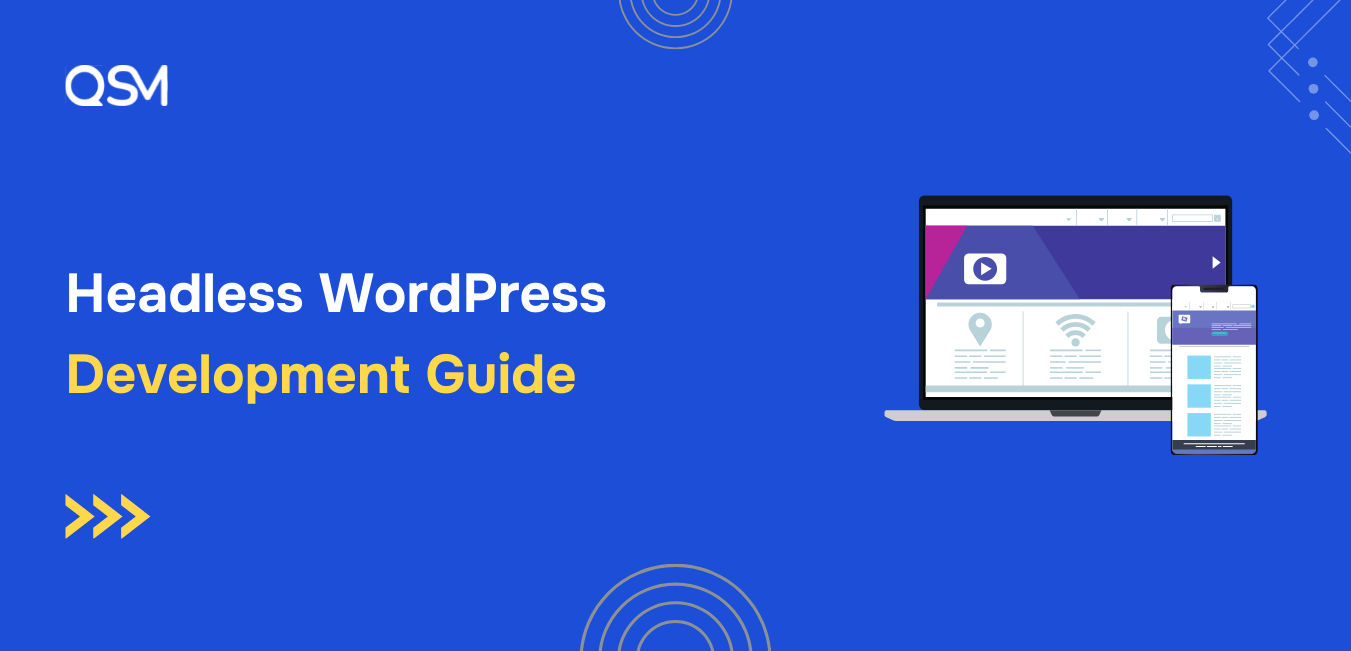The way websites are built has evolved significantly, and one of the most revolutionary shifts is the rise of headless WordPress development.
A headless setup decouples WordPress’s front end from its back end, providing developers with unparalleled flexibility, performance, and scalability.
This guide explores the fundamentals, benefits, setup process, and best practices of headless WordPress development.
What is Headless WordPress?
Headless WordPress refers to a development approach where WordPress functions purely as a content management system (CMS) without handling the front-end presentation. Instead of using traditional WordPress themes, content is delivered via APIs—primarily the REST API or GraphQL—to various front-end frameworks like React, Next.js, or Vue.js.
This architecture is particularly beneficial for businesses and developers aiming to create dynamic, fast-loading websites while leveraging the powerful content management features of WordPress.
Benefits of Headless WordPress
1. Improved Performance
Separating the front end from WordPress allows developers to use optimized, modern technologies that load content faster. Static site generation, server-side rendering, and caching mechanisms further enhance speed.
2. Better Security
Since the front end and back end are separate, the WordPress admin panel remains isolated, reducing vulnerabilities to common security threats such as DDoS attacks or plugin exploits.
3. Flexibility in Front-End Development
Developers can use cutting-edge frameworks and libraries instead of being limited to PHP-based themes. This approach enables smoother integrations with APIs, third-party services, and modern web technologies.
4. Omnichannel Content Delivery
Headless WordPress enables content distribution across multiple platforms, including mobile apps, IoT devices, and even digital billboards, without needing different CMS setups.
Setting Up a Headless WordPress Site
Step 1: Install and Configure WordPress
Start with a fresh WordPress installation. Since the CMS will only handle content, there’s no need for themes or traditional front-end elements.
Step 2: Enable the REST API or GraphQL
WordPress comes with a built-in REST API, but for more efficient queries, the WPGraphQL plugin is recommended. Install and activate WPGraphQL to fetch content with greater flexibility.
Step 3: Choose a Front-End Framework
Select a JavaScript framework like React, Next.js, or Vue.js to build the user interface. Each has its advantages:
- React – Component-based architecture and strong community support.
- Next.js – Server-side rendering and static site generation for better performance.
- Vue.js – Simplicity and ease of integration.
Step 4: Fetch WordPress Content
Using REST API or GraphQL, retrieve posts, pages, and media by making requests from the front end. For example, a simple fetch request in JavaScript:
fetch(‘https://yourwordpresssite.com/wp-json/wp/v2/posts’)
.then(response => response.json())
.then(data => console.log(data));
This fetches all published posts, which can be displayed using the front-end framework of choice.
Step 5: Optimize Performance
Since performance is a major advantage of headless WordPress, implementing caching strategies is essential. One way to achieve this is through proper caching mechanisms. Understanding how to clear WordPress cache ensures smooth updates when publishing or modifying content. This can be done by clearing plugin cache (if using caching plugins), server cache, or headless front-end static cache.
Best Practices for Headless WordPress
1. Use Static Site Generation When Possible
Static site generators (SSGs) like Next.js enhance performance by pre-rendering pages at build time. This reduces server requests and speeds up loading times.
2. Implement Efficient Caching
A headless WordPress setup benefits from multiple caching layers, including:
- Browser caching for storing assets locally.
- CDN caching for faster global delivery.
- API response caching to minimize database queries.
3. Optimize API Calls
Over-fetching and under-fetching data can impact performance. GraphQL is often preferred over REST API since it allows fetching only the required fields, reducing bandwidth consumption.
4. Secure API Endpoints
Since the WordPress back end is publicly accessible via APIs, implementing authentication mechanisms like OAuth or API keys helps restrict unauthorized access.
5. Regularly Monitor Performance
Tracking API response times, front-end performance, and caching efficiency ensures smooth operation. Tools like Lighthouse, GTmetrix, or New Relic help in continuous performance monitoring.
When to Use Headless WordPress
Headless WordPress is ideal for projects that require:
- High-performance websites with fast load times.
- Custom web applications that extend beyond traditional CMS limitations.
- Omnichannel content delivery across web, mobile, and IoT.
- Scalability for handling large content volumes efficiently.
However, if the goal is a simple blog or business website, a traditional WordPress setup may be more suitable.
Conclusion
Headless WordPress development offers a modern, scalable, and performance-driven approach to web development. By leveraging APIs, front-end frameworks, and caching mechanisms, developers can build fast, secure, and highly customizable web experiences. Understanding best practices, including how to clear WordPress cache and optimize API calls, ensures smooth performance. As businesses demand more dynamic digital experiences, headless WordPress continues to be a powerful solution in the evolving landscape of web development.




